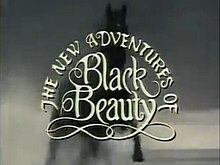Chapter 47: Hard Times
byChapter 47: Hard Times begins with Black Beauty caught in one of the most punishing phases of his life, working under Nicholas Skinner, a man whose every decision revolves around profit. His physical description alone—cold black eyes and a sharp nose—mirrors his strict and joyless nature. For Skinner, horses are tools to be drained of energy, then discarded once they can no longer turn a profit. Beauty’s daily routine is marked by relentless trips, barely any rest, and a complete absence of compassion. Each day blends into the next, as his body weakens from the grind and his spirit dims under the weight of neglect. Skinner sees no issue in forcing his horses through rain, cold, or heavy traffic. His indifference is a daily burden Beauty must carry, and the cost of that cruelty continues to accumulate with every journey through the city.
One of the harshest experiences occurs when a group hires the cab for a long trip across the city, despite Beauty already being visibly exhausted. The passengers include a young girl who notices Beauty’s frail condition and speaks up, pleading that he needs a break. Her concern, while kind, is swiftly brushed aside by Skinner, who orders the journey to continue without delay. The weight of the passengers and the steep inclines of the city roads make each step more painful than the last. Beauty feels every pull in his joints, every strain in his back, until his legs begin to tremble with fatigue. But no one, except that compassionate child, even considers easing his burden. It becomes clear that empathy is a luxury not often found in the business of hired cabs. And for horses like Beauty, the absence of kindness can be fatal.
The breaking point arrives at Ludgate Hill, where Beauty collapses beneath the weight of the carriage and years of overuse. His legs give out completely, and for a brief moment, he feels nothing but a cold stillness, ready to accept that this may be the end. Around him, people gather—some curious, some concerned—but their reactions are varied. A few express sorrow, while others impatiently suggest removing the horse and finding another to take his place. Skinner, always pragmatic and void of remorse, sees only inconvenience. No effort is made to understand the suffering that led to this moment, nor is there any thought to allow Beauty rest or proper care. He is pulled aside roughly, as if his collapse were a minor setback in an otherwise routine day.
Later, Skinner consults a farrier to examine Beauty, hoping for a quick solution that won’t cut into his earnings. The farrier confirms what is obvious—Beauty needs rest, possibly weeks of it—but Skinner scoffs at the suggestion. To him, a horse that cannot work is a loss, and losses must be removed. He casually decides to get rid of Beauty rather than consider recovery. It’s a moment that starkly reveals the ugly truth behind the working conditions of many cab horses in Victorian cities. They are bought for service, not for life. Once their legs give out or their spirits falter, they are deemed worthless and discarded. There is no retirement, no sanctuary—only exhaustion and an uncertain fate.
This chapter offers readers more than a tragic turn in the story; it opens a window into the cruel economic model of labor animals in that era. It’s a critique of society’s acceptance of such mistreatment, driven by convenience and profit. Anna Sewell draws attention to how ordinary people can either be complicit or take a stand, as seen through the contrast between the young girl’s concern and Skinner’s cold efficiency. The message resonates beyond its setting. Even today, animals used for work or entertainment often face similar fates if not protected by welfare laws and advocacy. Beauty’s suffering reminds readers that behind every service animal is a living creature capable of pain and deserving of care.
Organizations today continue to campaign for the rights and protection of working animals around the world. Horse sanctuaries, legislation on animal labor limits, and education about humane treatment all find their roots in stories like Beauty’s. Through Black Beauty’s collapse, Sewell wasn’t just telling a story—she was issuing a call for reform. The chapter’s strength lies in its emotional honesty and refusal to soften the truth. Readers are not just saddened—they are awakened. And perhaps, moved by that awakening, they begin to question how they treat not only animals, but all those whose labor supports our daily lives.

